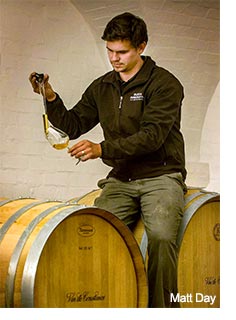And the quiet revolution under Matt Day
Of all the great sweet treats in the wine world, few have as much history behind them as South Africa's Vin de Constance. Muscat de Frontignan vines were first planted on the foothills of the Constantiaberg in the 17th century, looking out to False Bay. The combination of this noble Muscat variety, decomposed granite soils and ocean breezes led to an exquisite sweet wine. For a time, Vin de Constance was esteemed above Sauternes and Tokaji Eszencia. Then, in 1872, it disappeared, a victim of the phylloxera epidemic - and that, you might assume, was that. Except in the 1980s, vines were replanted here. As South Africa opened to the world after apartheid, Vin de Constance made a comeback as one of the world's great sweet wines.
Matt Day has been winemaker here since 2011. He used to like to swap winemaking tips with Sandrine Garbay, until recently of Chateau Yquem, though these are very different wines; where Yquem depends on botrytis, Vin de Constance is made from a mix of raisining and raisined grapes. (And at Yquem, they don't need a man in a lion suit to frighten away baboons). After a picking season that can last three months and fermentation that can take as long as a year, Vin de Constance matures for three years in a mix of first new barrels, and then old foudres. It is a close-to-unique process that results in a remarkably complex sweet wine.
Matt Day's developing contribution to this wine is an exquisite lightness of touch. Irresistably drinkable, his 2019 has a delicacy of style that evokes a dry wine (though of course it is very much a sweet one). The honey and nutmeg bouquet mingles with the beeswax and lanolin aromas suggestive of the way great white wines age. /NT
`The 2019 Vin de Constance is matured for 18 months in 500-liter Hungarian and French oak barrels, 50% new, followed by another 18 months in oak foudres. The growing season saw more sunlight hours than previous vintages (2,998 compared to 2,588 in 2018 for example). It has an understated nose, almost Sauternes-like even if it does not contain an ounce of botrytis. Subtle nutty aromas percolate through the wild honey and quince scents, wax resin and lanolin. The palate is medium-bodied and very pure. Disarmingly fine acidity, it is slightly Germanic towards the finish. with a hint of lemongrass lingering on the aftertaste. This is a superb Vin de Constance under the tenure of Matt Day that is a step closer to what you might confusingly call a non-sweet dessert wine. 97 points` - Neal Martin, vinous.com, July 2022



